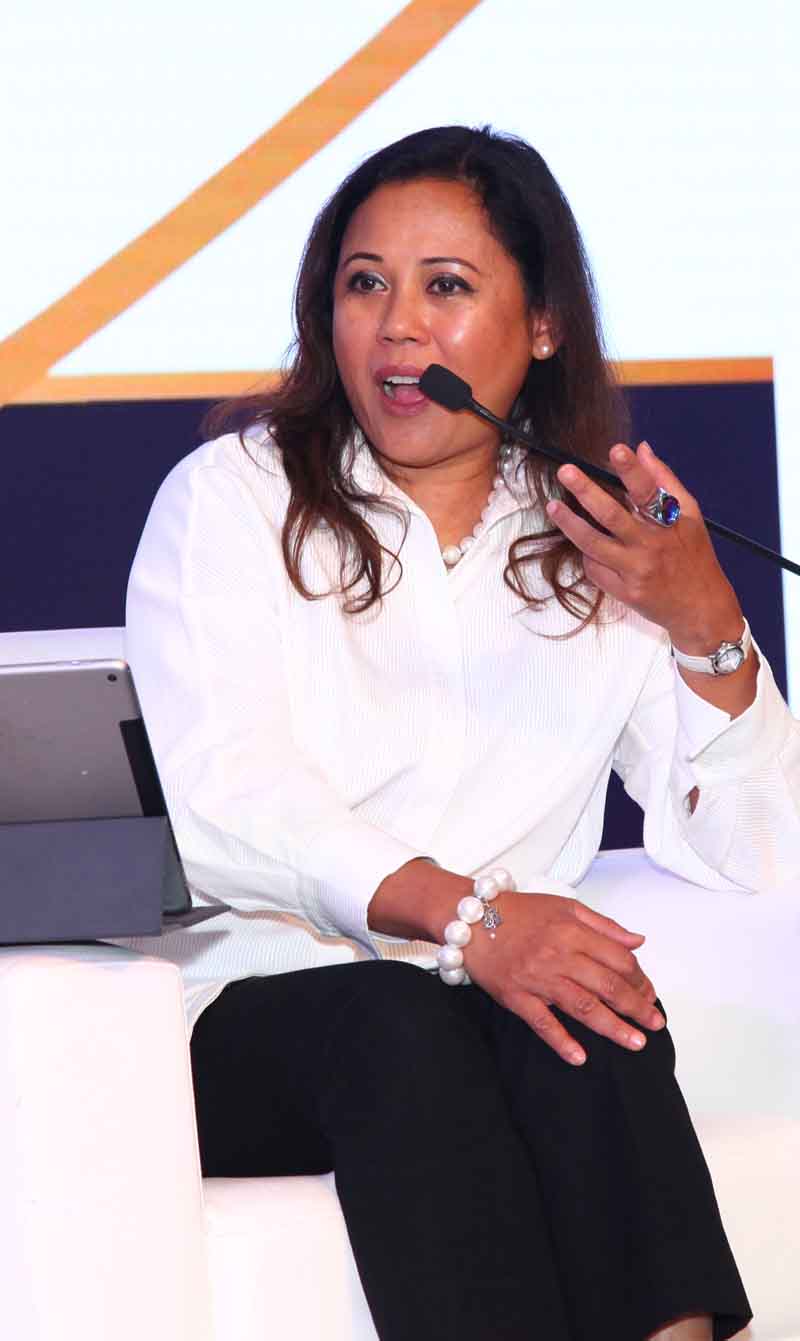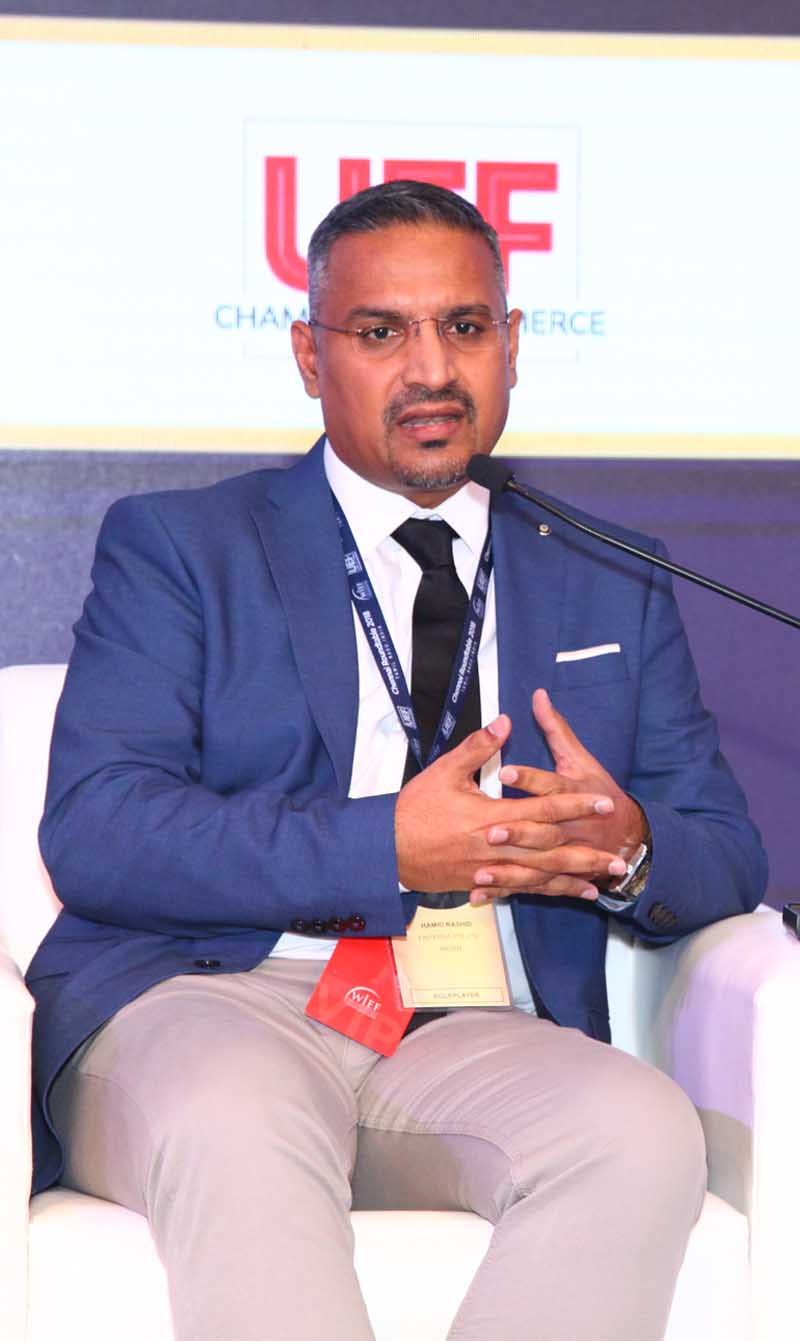Enabling trade through Islamic finance
As international trade continues to be the catalyst of growth for many countries in the 21st century, one question emerges: can Islamic finance be a driving force in facilitating global trade? The 10th WIEF gathered leaders from the world’s top Islamic banks to examine this issue in depth.
Intra-OIC trade grew 26 per cent in 2011 and reached a record USD743 billion in 2012. In recent years, trade movements have increased in the Middle East, the emerging economies and Islamic growth markets such as Turkey, Malaysia, Indonesia, the UAE, Saudi Arabia and Qatar. That increase was built on a rich tradition of trade in the Muslim World.
However, the decline in shares of intra-OIC trade in 2015 of 20 per cent compared to 18 per cent in 2015 can be explained by the general economic environment of the OIC countries including the appreciate of US dollar. This is expected to rise by 25 per cent of intra-OIC trade shares by 2025.
As keynote speaker H.E. Azim Ibrohim, Deputy Prime Minister of Tajikistan, pointed out, ‘the Islamic states have had close cultural, economic, trade and political relations’ through the ages.
The state of Islamic finance
The volume of trade by OIC countries may still constitute just a small fraction of global trade (the OIC countries accounted for only 13 per cent of global trade in 2012 even though Muslims make up 23 per cent of the global population) but there has already been rapid progress in Islamic trade financing. In his welcoming address, H.E. Hussain Al Qemzi, board member of the Dubai Islamic Economy Development Centre and managing director of Noor Bank, noted that ‘even three or four years ago, Islamic finance was less receptive to trade financing. However, the inertia is fast disappearing. Today, the exponential global growth of Islamic finance has meant that shariah-compliant trade financing is a viable solution to businesses trading beyond their own boundaries.’
Nevertheless, Islamic trade financing has yet to pose a serious challenge to conventional trade financing, and Al Qemzi warned against complacency. He noted that ‘at the start of 2014, Islamic trade finance transactions totalled only a negligible 1.5 per cent of total global trade nance transactions.’
Challenges
As Islamic finance as a whole gains greater acceptance worldwide, the subcategory that is Islamic trade financing will undoubtedly grow in tandem. By the same token, the key challenges in Islamic trade financing today appear to be the same as those affecting other areas of Islamic finance. A 2012 study by the UK Islamic Finance Secretariat estimated that only 12 per cent of Muslim people use Islamic finance. What is holding us back?
For Al Qemzi, the primary challenge in Islamic trade financing was documentation. ‘We need to facilitate user-friendly documentation and that means making it straight and simple.’ Moderator Samad Sirohey, CEO of Citi Islamic Investment Bank, concurred, saying that Islamic financial institutions often encountered ‘reluctance from clients and customers to transact on a set of documents that are very new, peculiar, and very dif cult to understand.’
The second challenge was the overall lack of customer awareness, and there was a general hesitation on the part
of prospective users who were not familiar with the shariah-compliant trade financing structure. According to Al Qemzi, ‘the terminology, the structure, the movement of the funds and the movement of the documents’ were some areas where customer awareness needed to be enhanced.
In this regard, the Malaysian experience, with its multiracial and multi-religious population, was encouraging. Speaker Muzaffar Hisham, Group Head of Global Banking of Maybank Group, pointed out that today, 50 per cent of Maybank Islamic’s customers were non-Muslim, and a similar kind of sustained awareness building could help Islamic trade financing take off.
The third challenge was the lack of standardisation in Islamic trade financing, which was a problem that existed not only in documentation-related matters but also in other areas. For example, different shariah boards tended to have different opinions on trade financing structure. In contrast, structures in conventional banking such as master risk participation agreements were considered standard.
Al Qemzi also emphasised the need for governments, incentives and regulatory frameworks to support the expansion of Islamic trade financing.
Helping SMEs
Which businesses were most in need of trade financing? The speakers agreed that in the effort to develop Islamic trade financing, one target group could not be ignored: SMEs. In the MENA region, for example, SMEs were the backbone of the economy and therefore held huge potential for Islamic trade finance.
Both conventional and Islamic financial systems needed to do more to help SMEs. Startup SMEs were particularly disadvantaged when it came to obtaining assistance because the system was not geared to support SMEs in incubation and venture capital was not easy to secure. As Dr Chilwan pointed out: ‘It’s very easy to give money to somebody who’s been in business for five years—or even three for that matter—but it’s very difficult to give money to somebody who’s just recently set up an SME business.’
Moderator Sirohey noted that ‘the DNA of our credit approval process and the analytical process does not lend itself to dealing [with situations] where you do not have financial information.’ The banks have difficulty making credit decisions, and yet their financial products are the very ones that SMEs need in order to grow, whether they are domestically focused or export focused.
On the plus side, some banks have started paying closer attention to the needs of SMEs. Noor Bank, for example, offered comprehensive trade solutions for SMEs that covered import and export services, letters of credit, documentary collections and guarantees, and financing options as well as factoring.
Besides developing the right financial products, there were also alternative ways of supporting SMEs. As speaker Arif Usmani, General Manager, Global Head of Wholesale Banking, Abu Dhabi Islamic Bank suggested that in countries where the quality of financial disclosure was poor for SMEs, banks could collaborate with audit firms to help pay for audits and reduce the cost of money for SMEs.
Besides offering grants, governments could also provide credit support, as in the case of Malaysia—through the Credit Guarantee Corporation, Malaysian government agencies provided a certain percentage of credit support, which was then complemented by banks.
Promoting growth
SMEs are not the only businesses that require trade financing. In international trade, instruments such as trade insurance are very much needed across the board. As the demand for these instruments continues to rise rapidly, opportunities abound in Islamic trade financing.
What can be done to ensure that Islamic trade financing facilitates global trade? Many believe the starting point lies in the larger context. For Dr Adnan Chilwan, CEO, Dubai Islamic Bank, the way forward was to ensure that Islamic finance fully penetrated OIC countries. Once this was achieved, ‘the next step is to make sure that all structures pertaining to Islamic nance, Islamic trade being one of them, are maximised to their fullest potential.’
Muzaffar shared some factors to be aware of going forward. First, ‘in any cross-border transaction, we always need to be mindful about country risk.’ Second, the policies of the countries involved clearly played an important role in whether or not Islamic trade financing would take off. As an example, Muzaffar highlighted recent tax agreements between Malaysia, Indonesia and Singapore concerning withholding tax which created a common ground, leading to a tremendous growth trajectory in trade volume.
As another example, Muzaffar highlighted the ability of centres such as Dubai, Hong Kong and Singapore to strike a balance between disclosure-based regulation and merit-based regulation. Clearing hurdles and opening doors were essential to promoting Islamic trade financing, and in this respect, the conversation between policymakers and players was certainly an important one.
While there was a reason to be optimistic about the future, there would no doubt be kinks to iron out along the way. Sirohey noted that while there had been a number of initiatives to provide credit insurance, notably in the GCC context, they were yet to grow in scale. In contrast, in the conventional banking universe, export credit agency (ECA) financing was a major component of what banks did in Europe, the US, Asia and elsewhere. ‘Why hasn’t this really gotten embedded in the Islamic banking context?’ Sirohey asked.
Dr Chilwan believed that this was a question of learning to walk before running. The sequence would likely be one where Islamic financing must develop first, then Islamic trade, and then ECAs, and then credit insurance. Eventually, we would get to a point where Islamic banking would no longer be referred to as ‘an alternative form of banking’ but as ‘a norm of banking,’ he said.
Speaker Toby O’Connor, CEO, the Islamic Bank of Asia, provided the perspective of Singapore. While there were certain challenges to being an Islamic bank in a predominantly conventional market, O’Connor was optimistic that when the volume of trade increased, the need for Islamic finance would also grow. ‘There is an awful lot of investment from Singapore in the GCC. I think a good portion of that over time is going to come into Islamic finance.’ The regulatory framework in Singapore has also ensured a level playing field and supported growth. From a regulatory perspective, ‘there are no disadvantages to doing something Islamic,’ he said. As Usmani, said, ‘banks will go where the customers are, where the markets are.’
Another likely development might see Islamic finance penetrating non-OIC countries with significant Muslim populations. India was an obvious example, but there were also possibilities in Europe and the US.
In the African context, a question from the audience touched again on the dif culty of executing projects without credit insurance. While agreeing that transactions were costlier in the absence of credit insurance, Dr Chilwan expressed optimism about the enormous potential of Islamic finance in Africa, saying that it was only a matter of time before more and more instruments became commonplace. Inroads have already been made in the East African belt, which has about 100 million Muslims, and Dr Chilwan saw Dubai playing a key role in this regard: ‘Dubai’s ambition to guide, connect and be the hub between East and Sub-Saharan Africa is now seeing the light of day. There are institutions that are targeting Africa and I think the moment they start working in Africa, ECAs and credit insurances would logically follow.’
Conclusion
Islamic trade financing currently constitutes only a fraction of global trade financing transactions but is poised for significant growth once key issues and challenges have been addressed. Steps that can be taken to promote growth include simplifying documentation, raising awareness among customers and achieving a higher degree of standardisation within the Islamic finance world. Targeting for growth in the OIC countries is the logical starting point, but there are also considerable opportunities for Islamic trade financing to flourish in non-OIC countries with sizeable Muslim populations. More should also be done to help SMEs, given that they are the backbone of the economy in many countries.
___________________
This report is based on a panel discussion from the 10th WIEF in Dubai.
Photo by chuttersnap on Unsplash





